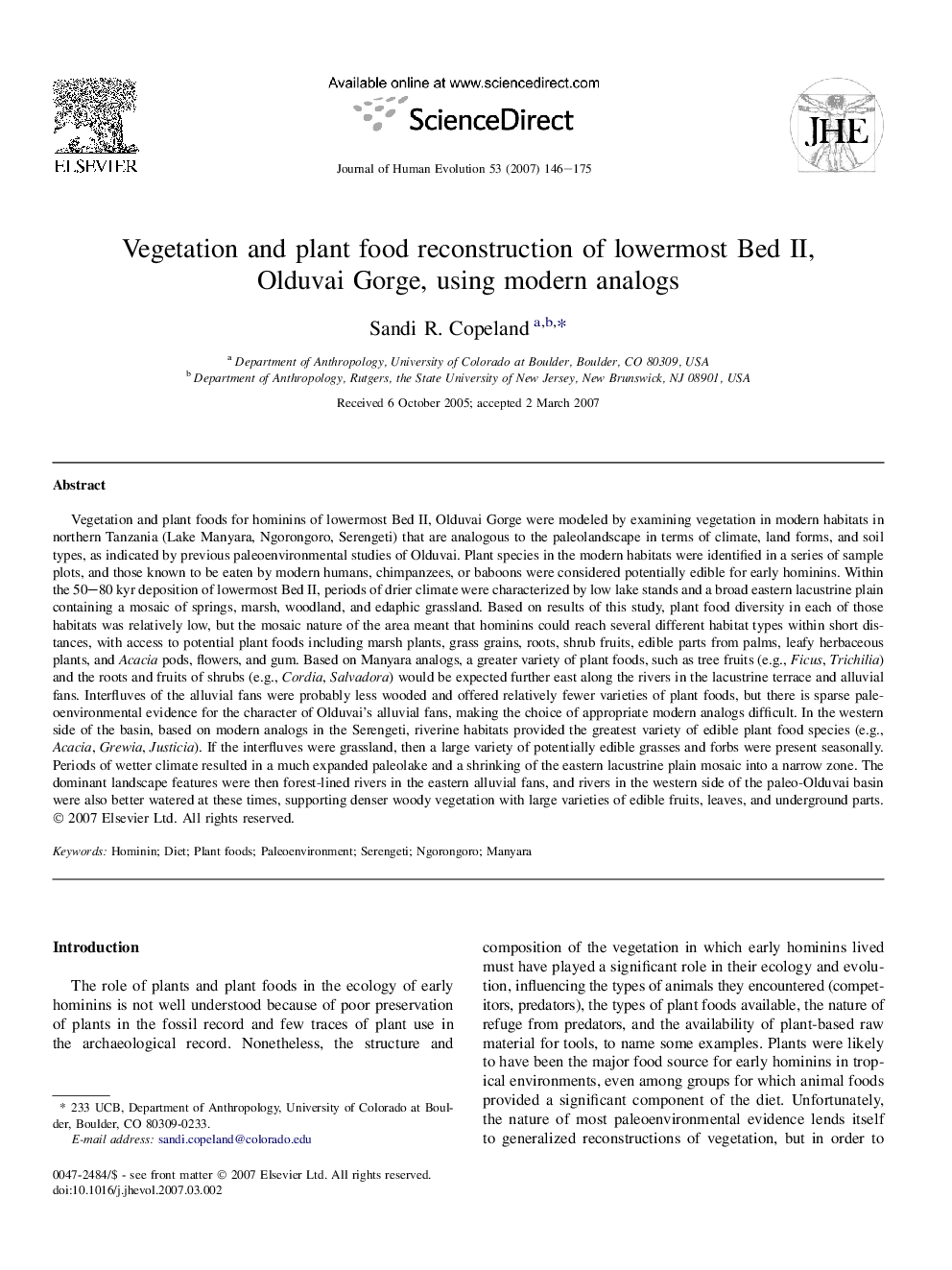| کد مقاله | کد نشریه | سال انتشار | مقاله انگلیسی | نسخه تمام متن |
|---|---|---|---|---|
| 4557012 | 1329519 | 2007 | 30 صفحه PDF | دانلود رایگان |

Vegetation and plant foods for hominins of lowermost Bed II, Olduvai Gorge were modeled by examining vegetation in modern habitats in northern Tanzania (Lake Manyara, Ngorongoro, Serengeti) that are analogous to the paleolandscape in terms of climate, land forms, and soil types, as indicated by previous paleoenvironmental studies of Olduvai. Plant species in the modern habitats were identified in a series of sample plots, and those known to be eaten by modern humans, chimpanzees, or baboons were considered potentially edible for early hominins. Within the 50–80 kyr deposition of lowermost Bed II, periods of drier climate were characterized by low lake stands and a broad eastern lacustrine plain containing a mosaic of springs, marsh, woodland, and edaphic grassland. Based on results of this study, plant food diversity in each of those habitats was relatively low, but the mosaic nature of the area meant that hominins could reach several different habitat types within short distances, with access to potential plant foods including marsh plants, grass grains, roots, shrub fruits, edible parts from palms, leafy herbaceous plants, and Acacia pods, flowers, and gum. Based on Manyara analogs, a greater variety of plant foods, such as tree fruits (e.g., Ficus, Trichilia) and the roots and fruits of shrubs (e.g., Cordia, Salvadora) would be expected further east along the rivers in the lacustrine terrace and alluvial fans. Interfluves of the alluvial fans were probably less wooded and offered relatively fewer varieties of plant foods, but there is sparse paleoenvironmental evidence for the character of Olduvai's alluvial fans, making the choice of appropriate modern analogs difficult. In the western side of the basin, based on modern analogs in the Serengeti, riverine habitats provided the greatest variety of edible plant food species (e.g., Acacia, Grewia, Justicia). If the interfluves were grassland, then a large variety of potentially edible grasses and forbs were present seasonally. Periods of wetter climate resulted in a much expanded paleolake and a shrinking of the eastern lacustrine plain mosaic into a narrow zone. The dominant landscape features were then forest-lined rivers in the eastern alluvial fans, and rivers in the western side of the paleo-Olduvai basin were also better watered at these times, supporting denser woody vegetation with large varieties of edible fruits, leaves, and underground parts.
Journal: Journal of Human Evolution - Volume 53, Issue 2, August 2007, Pages 146–175